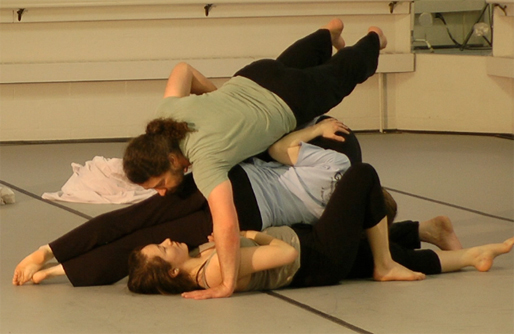"Shades" is a modern retelling of "The Kingdom of the Shades" section of the ballet La Bayadere.
In "The Kingdom of the Shades," a warrior, Solor, smokes opium to visit his dead lover Nikiya, who has been slain out of jealousy. The section is performed by a series of ballerinas, representing departed bayaderes, temple dancers, who enter singly, performing the same hypnotic series of simple movements. They gradually fill the stage with a waving ocean of white-clad shades, representing an ideal of eternity: a neverending flow of tranquility shared by countless ghosts.
We approached this dance with the question, why do we believe that the afterlife is a state of ceaseless repetition? Heaven, indeed, is often depicted as a kind of perpetual Sunday afternoon, in which we will always visit Mom, always eat ice cream, never have any pain, always watch the home team win, and always be satisfied, every time. It is a static image that denies growth: no death means no change.
This is undoubtedly a reassuring idea when we are suffering loss: we yearn for the return of our loved ones, and that they might never go away again. When we suffer a sea change, we long for repetition.
In our version of "Shades," dancers continually revolve around one another, following circular pathways along each other's bodies. Dancers accumulate gradually to fill the negative space around limbs. The intimacy of close contact throughout the dance references the intimacy of grief: Nikiya's arm wraps around Solor's forehead, turning him into a crouch, over which Nikiya drapes, spilling to the floor and rising up again, with Solor, to twist into a new embrace.
We depict, however, that this vision of heaven, of eternal return, is only as persistent as our own bodies. We may protect a vision of the afterlife only as long as we do not experience it. Our visions end when we do.

